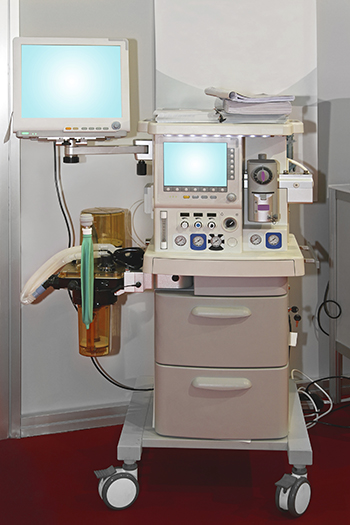Biomedical Engineering
Biomedical engineers apply the fundamentals of mathematics, physics, chemistry, biology, and engineering to solve medically relevant problems. Examples of biomedical engineering activities include medical device design, specification, fabrication, standards development, and testing.
Biomedical engineers often work side-by-side with clinical engineers – professionals who support and advance patient care by applying engineering and managerial skills to health care technology.
and advance patient care by applying engineering and managerial skills to health care technology.
NCPS uses biomedical, clinical, and systems engineering principles and techniques to support the safe use of medical devices at VA facilities.
Contributions from these engineers are critical to two aspects of this effort:
- In a prospective risk assessment, engineers provide consultations to members of the VA clinical staff (such as doctors, nurses, therapists, and technicians), during the process of procuring and acquiring medical devices.
- In a retrospective risk assessment, engineers contribute by investigating, defining and solving problems, and improving processes associated with devices.
Prospective Example
An example of a prospective risk assessment on a complex medical device is when biomedical and clinical engineers conduct a review of a deep brain stimulator prior to its use at VA facilities. These devices help prevent people with Parkinson’s disease from shaking.
The engineers determine that patients with such implants must be identified in the VA’s Computerized Patient Records System to ensure that "contraindicated modalities" are not allowed to be used. A contraindicated modality is a medical term for a procedure, such as an MRI, that can cause an implant to heat, which may result in brain damage.
Retrospective Example
Not all devices reviewed are sophisticated medical devices. Some can be simple medical devices, such as a "pipette," which can be used as an oral syringe to administer liquid medications.
After such a pipette was involved in a close call that concerned a dosage, a retrospective risk assessment was conducted. The scale on the device in question was read in the opposite manner as a standard syringe, causing confusion over correct dosages. The assessment led to replacing the pipettes with safer, easier–to-read devices. A second alternative was to replace the liquid dosage with unit dose pills, eliminating liquid all together.
Use in Clinical Practice Recommendations
The potential harm contraindicated modalities can cause patients is noted in clinical practice recommendations. Specific use is also recorded in the patient’s computerized record, which is referred to routinely by medical staff at all levels.
Placing this information in the computerized record is particularly important to a patient’s welfare. Clinical staff are prevented from admitting, scheduling, or treating a patient without getting approval from the physician who implanted the device. Known as a "forcing function," this technique creates "a time out" to reduce the risk that a patient will be harmed inadvertently as a result of his or her care – a key NCPS goal.
Learn More
Visit the American College of Clinical Engineering*†
*By clicking on these links, you will leave the Department of Veterans Affairs Web site.
†VA does not endorse and is not responsible for the content of the linked Web site.



















